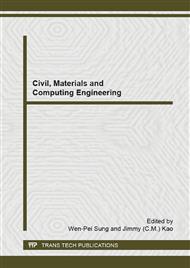p.820
p.824
p.828
p.833
p.837
p.843
p.847
p.851
p.856
Design and Implementation of Virtual Roaming Based on Unity3D
Abstract:
Along with the rapid development,3D virtual reality technology has been applied more and more widely. In order to display the virtual scene better and make user an immersed body experience, 3D rendering engine plays a key role in this field. Unity 3d is a professional gaming rendering engine with strong compatibility and comprehensive integration. In this paper, we focus on the Unity 3D rendering engine, and describe the basic workflow of virtual roaming. We discuss the key technology to realize outdoor roaming through Unity 3D and optimization.
Info:
Periodical:
Pages:
837-842
Citation:
Online since:
December 2014
Authors:
Keywords:
Price:
Сopyright:
© 2015 Trans Tech Publications Ltd. All Rights Reserved
Share:
Citation:


